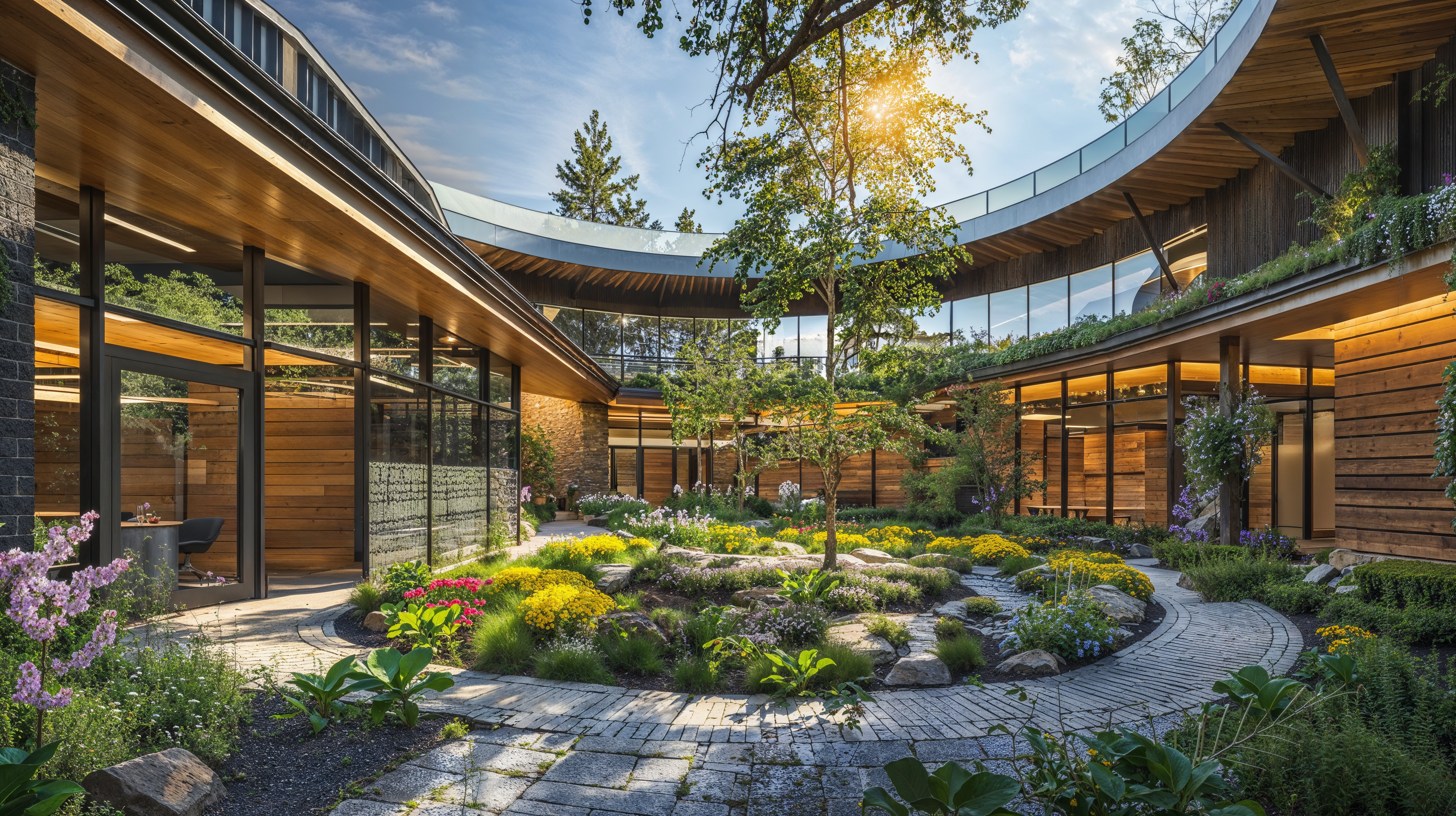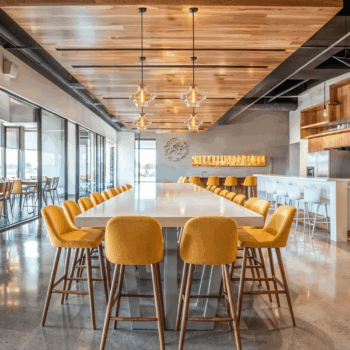
Regenerative architecture focuses on creating buildings that restore and enhance their environment—a principle increasingly applied to healthcare facilities. By integrating designs that benefit both human health and ecosystems, regenerative healthcare spaces promote healing, sustainability, and long-term environmental well-being.
Natural stone, reclaimed wood, and sustainably harvested timber provide durable and aesthetic building solutions while reducing the carbon footprint. These materials are complemented by low-VOC paints and sealants, which improve indoor air quality by minimizing harmful emissions. Textiles such as organic cotton, linen, and recycled polyester are used for upholstery and curtains, combining durability with environmental responsibility.
Biophilic design, a hallmark of regenerative architecture, emphasizes a strong connection to nature through materials and finishes that mimic natural textures. Woven textiles inspired by organic patterns and colors evoke the feel of natural landscapes. Flooring options like terrazzo with recycled aggregates or sustainably sourced cork add warmth and acoustic comfort to patient rooms and common areas.
Living walls, green roofs, and water features are integrated to create calming environments while improving air quality and reducing the urban heat island effect. These features often incorporate native plants and local stones, fostering biodiversity and promoting ecological harmony.
Healthcare facilities benefit from materials such as textile acoustic panels made from recycled materials, which improve sound absorption in high-traffic areas, and anti-microbial surfaces like copper and quartz composites, which enhance hygiene without relying on harsh chemicals.
Sustainability efforts also extend to energy efficiency. Triple-glazed windows and highly reflective roofing materials reduce energy consumption, and textiles and finishes incorporating natural dyes and renewable fibers enhance eco-friendliness without sacrificing aesthetic appeal.
By prioritizing health, durability, and environmental impact, regenerative architecture transforms healthcare spaces into nurturing environments. These spaces support recovery, reduce ecological footprints, and foster a harmonious connection between humans and nature.
Looking to explore more about incorporating nature into design? Check out our article on Green Roofs and Walls.







